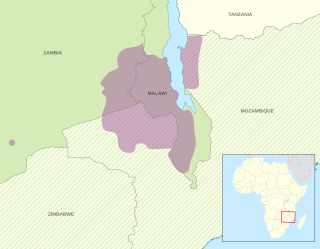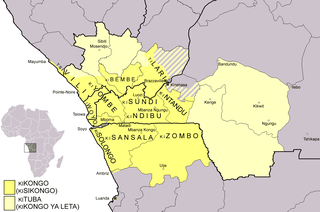Related Research Articles

Hebrew is a Northwest Semitic language within the Afroasiatic language family. It was natively spoken by the Israelites and remained in regular use as a spoken language by their longest-surviving descendants, the Jews and Samaritans, before dying out between 200–400 CE. However, it was largely preserved as a liturgical language, featuring prominently in Judaism and Samaritanism. Having ceased to be a dead language in the 19th century, today's Hebrew serves as the only successful example of linguistic revival. It is the only non-extinct Canaanite language, and is also one of only two Northwest Semitic languages still spoken, with the other being Aramaic.

Madí—also known as Jamamadí after one of its dialects, and also Kapaná or Kanamanti (Canamanti)—is an Arawan language spoken by about 1,000 Jamamadi, Banawá, and Jarawara people scattered over Amazonas, Brazil.
Shona is a Bantu language of the Shona people of Zimbabwe. It was codified by the colonial government in the 1950s. According to Ethnologue, Shona, comprising the Zezuru, Korekore and Karanga dialects, is spoken by about 6 .5 million people. The Manyika dialect of Shona is listed separately by Ethnologue, and is spoken by 1,025,000 people.
Denaʼina, also Tanaina, is the Athabaskan language of the region surrounding Cook Inlet. It is geographically unique in Alaska as the only Alaska Athabaskan language to include territory which borders salt water. Four dialects are usually distinguished:
- Upper Inlet, spoken in Eklutna, Knik, Susitna, Tyonek
- Outer Inlet, spoken in Kenai, Kustatan, Seldovia
- Iliamna, spoken in Pedro Bay, Old Iliamna, Lake Iliamna area
- Inland, spoken in Nondalton, Lime Village
Kaonde (kiiKaonde) is a Bantu language spoken primarily in Zambia but also in the Democratic Republic of the Congo. Kaonde and its dialects are spoken and understood by perhaps 350,000 people or more. It is estimated that approximately 2.3% of Zambians are native Kaonde speakers. Kaonde speakers overwhelmingly live in the Northwestern and parts of Central regions of Zambia.

Chewa is a Bantu language spoken in Malawi and a recognised minority in Zambia and Mozambique. The noun class prefix chi- is used for languages, so the language is usually called Chichewa and Chinyanja. In Malawi, the name was officially changed from Chinyanja to Chichewa in 1968 at the insistence of President Hastings Kamuzu Banda, and this is still the name most commonly used in Malawi today. In Zambia, the language is generally known as Nyanja or Cinyanja/Chinyanja '(language) of the lake'.
Slavey is a group of Athabaskan languages and a dialect continuum spoken amongst the Dene peoples of Canada in the Northwest Territories – or central Denendeh – where it also has official status. The languages are primarily written using a modified Latin script, with some using Canadian Aboriginal syllabics. In their own languages, these languages are referred to as: Sahtúgot’įné Yatı̨́, K’ashógot’įne Goxedǝ́ and Shíhgot’įne Yatı̨́ in the North, and Dené Dháh, Dene Yatıé or Dene Zhatıé in the South.

Kongo or Kikongo is one of the Bantu languages spoken by the Kongo people living in the Democratic Republic of the Congo, the Republic of the Congo, Gabon and Angola. It is a tonal language. It was spoken by many of those who were taken from the region and sold as slaves in the Americas. For this reason, while Kongo still is spoken in the above-mentioned countries, creolized forms of the language are found in ritual speech of Afro-American religions, especially in Brazil, Cuba, Puerto Rico, the Dominican Republic and Haiti. It is also one of the sources of the Gullah language and the Palenquero creole in Colombia. The vast majority of present-day speakers live in Africa. There are roughly seven million native speakers of Kongo, with perhaps two million more who use it as a second language.
Soga, or Lusoga, is a Bantu language spoken by the Soga people of the Busoga region in Eastern Uganda. With over three million speakers, it is one of the major languages of Uganda, after English, Swahili, and Luganda. However, it is largely restricted to the Busoga region, which is mainly within the natural boundaries of Lake Victoria to the south, Lake Kyoga to the north, the Nile river to the west and the Mpologoma ('Lion') river to the east of Namutumba district. It is tonal.

The Chinookan languages were a small family of languages spoken in Oregon and Washington along the Columbia River by Chinook peoples. Although the last known native speaker of any Chinookan language died in 2012, the 2009-2013 American Community Survey found 270 self-identified speakers of Upper Chinook.
Swampy Cree is a variety of the Algonquian language, Cree. It is spoken in a series of Swampy Cree communities in northern Manitoba, central northeast of Saskatchewan along the Saskatchewan River and along the Hudson Bay coast and adjacent inland areas to the south and west, and Ontario along the coast of Hudson Bay and James Bay. Within the group of dialects called "West Cree", it is referred to as an "n-dialect", as the variable phoneme common to all Cree dialects appears as "n" in this dialect.
Comox or Éyɂáɂjuuthem is a Coast Salish language historically spoken in the northern Georgia Strait region, spanning the east coast of Vancouver Island and the northern Sunshine Coast and adjoining inlets and islands. More specifically, ʔayajuθəm was traditionally spoken in Bute Inlet, in Squirrel Cove, and in Sliammon, located in the area now known as Powell River.

Bukalo is a village in Namibia. It is situated in the Zambezi Region 43 kilometres away from the region’s capital, Katima Mulilo. It is also the Royal Headquarters of the Subia people. In 2013, it was upgraded from a settlement to a village with its own village council by the former President of Namibia, Hifikepunye Pohamba.
Äiwoo is an Oceanic language spoken on the Santa Cruz Islands and the Reef Islands in the Temotu Province of the Solomon Islands.
Woods Cree is an indigenous language spoken in Northern Manitoba, Northern Saskatchewan and Northern Alberta, Canada. It is part of the Cree-Montagnais-Naskapi dialect continuum. The dialect continuum has around 116,000 speakers; the exact population of Woods Cree speakers is unknown, estimated between 2,600 and 35,000.

Ossetian, commonly referred to as Ossetic and rarely as Ossete, is an Eastern Iranian language that is spoken predominantly in Ossetia, a region situated on both sides of the Greater Caucasus. It is the native language of the Ossetian people, and is one of the few Iranian languages spoken in Europe; it is a relative and possibly a descendant of the extinct Scythian, Sarmatian, and Alanic languages.

The Ikuhane people, also known as the Subiya or Subia, are a Bantu-speaking ethnic group who are native to Southern Africa, primarily Namibia. They form part of Namibia’s Zambezi people and are also found in large numbers in Botswana and Zambia. Their language is the Ikuhane language (Chikuhane) also known as the Subia language (Chisubia).
Marra, sometimes formerly spelt Mara, is an Australian Aboriginal language, traditionally spoken on an area of the Gulf of Carpentaria coast in the Northern Territory around the Roper, Towns and Limmen Bight Rivers. Marra is now an endangered language. The most recent survey was in 1991; at that time, there were only 15 speakers, all elderly. Most Marra people now speak Kriol as their main language. The remaining elderly Marra speakers live in the Aboriginal communities of Ngukurr, Numbulwar, Borroloola and Minyerri.
Warndarrang (waɳʈaraŋ), also spelt Warndarang, Wanderang, Wandaran, and other variants is an extinct Aboriginal Australian language in the Arnhem family, formerly spoken by the Warndarrang people in southern Arnhem Land, along the Gulf of Carpentaria. The last speaker was Isaac Joshua, who died in 1974, while working with the linguist Jeffrey Heath.
Amarasi is a Central Malayo-Polynesian language of West Timor, and is spoken by the Amarasi. The Amarasi language has about 80,000 native speakers, with four main dialects called Ro'is, Kotos, Tais Nonof, and Ketun, though many differences exist between individual villages. It uses Subject-Object-Verb grammar structure. Speakers are interspersed with those of Helong.
References
- ↑ Kuhane at Ethnologue (25th ed., 2022)

- ↑ Jouni Filip Maho, 2009. New Updated Guthrie List Online
- ↑ "Kuhane Bible". breakeveryyoke.com. eBible.org. Retrieved 8 November 2022.